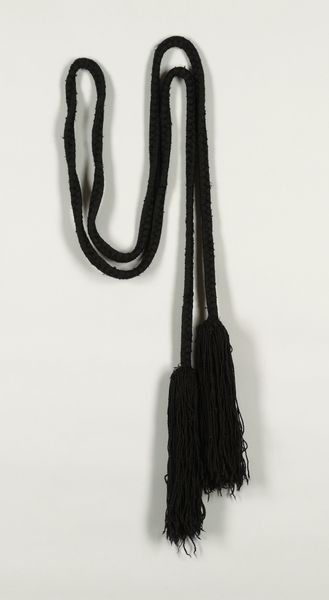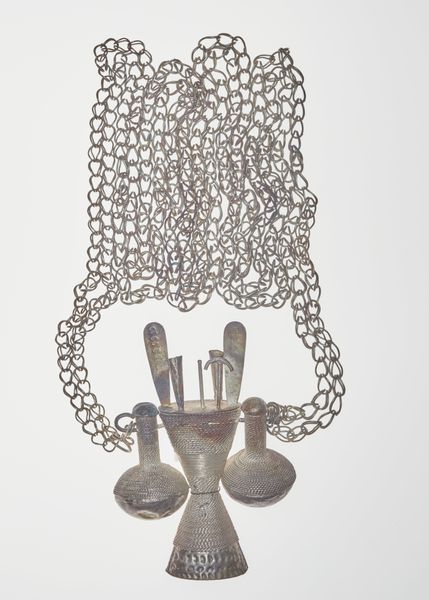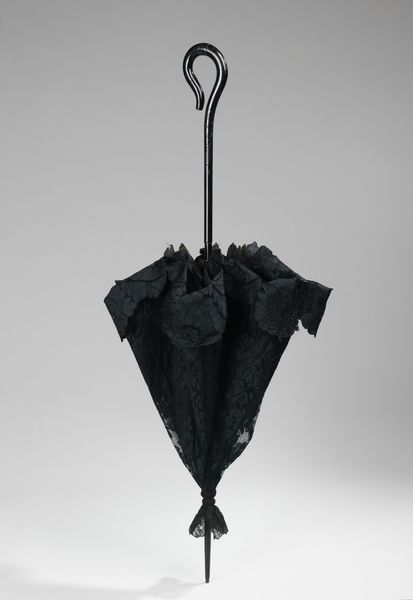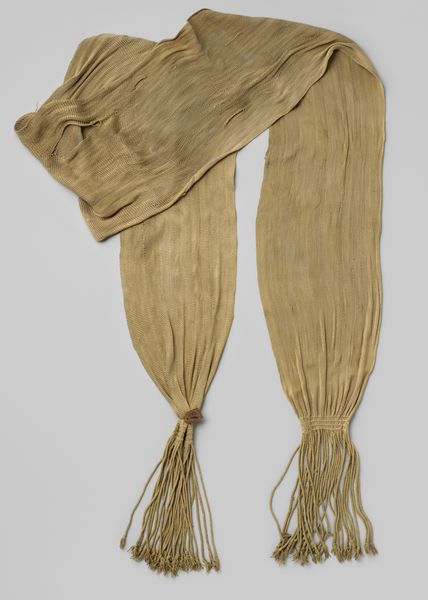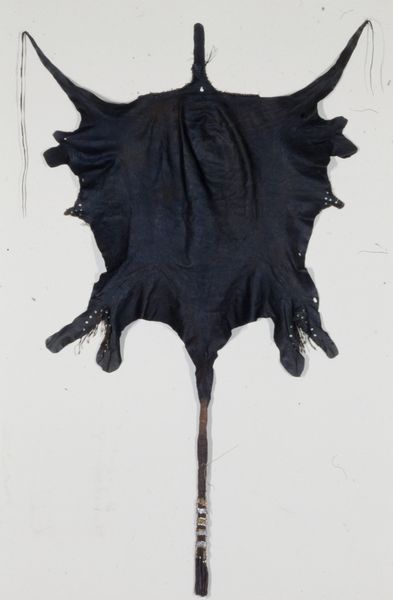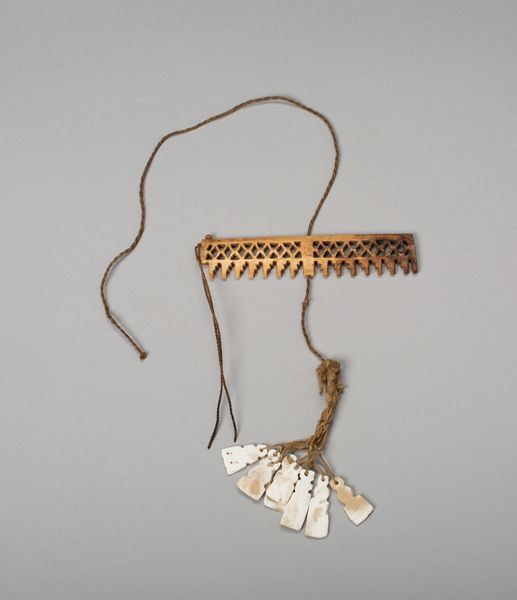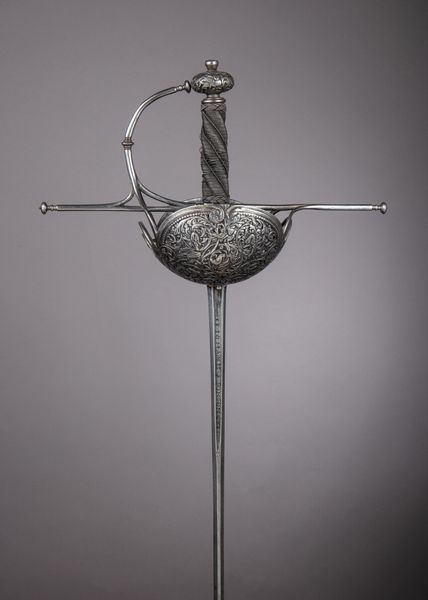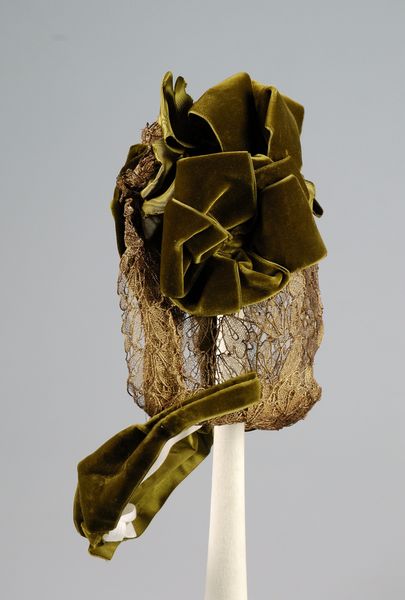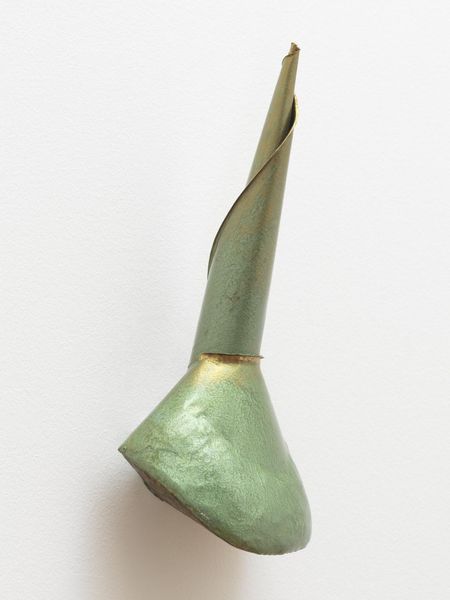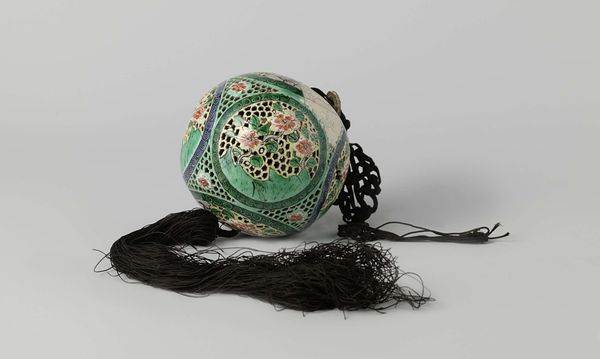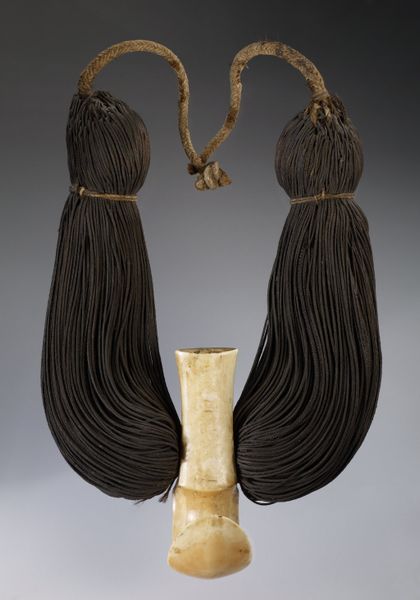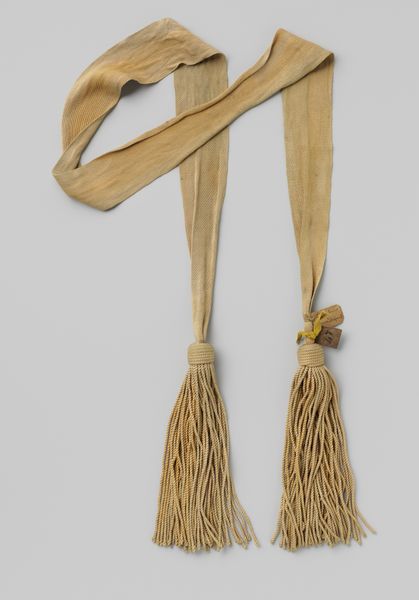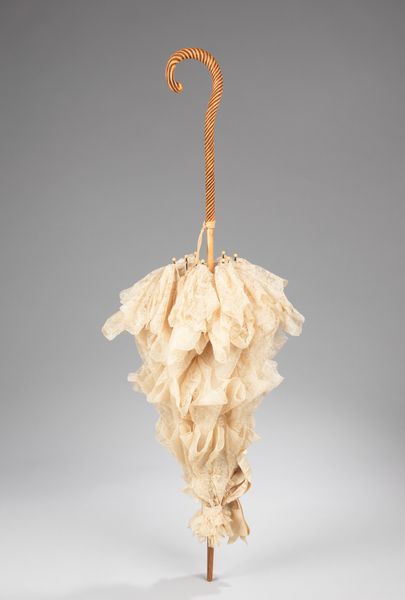
fibre-art, silver, textile
#
fibre-art
#
silver
#
textile
#
islamic-art
Dimensions: 5 x 4 1/2 x 1 3/4 in. (12.7 x 11.4 x 4.45 cm)
Copyright: Public Domain
Curator: Here we have an object called an Amulet or 'tcherot', dating from around the 20th century. The Tuareg people created it. It’s currently held here at the Minneapolis Institute of Art. It incorporates silver and fibre in its making. Editor: The contrast in textures really grabs me. That rigid, almost severe silver pendant hanging from the organic chaos of those thick, fibrous cords. It evokes a feeling of protection, almost armour-like, but softened by the tactile, yielding textile components. Curator: The juxtaposition you’re noting highlights the ingenuity of Tuareg craftsmanship. We can see how indigenous American art traditions are integrated with silverwork, along with elements pointing to its use within the Islamic faith. Notice the careful labor of both the silversmith and the textile artist to assemble such a detailed, protective adornment, don’t you think? Editor: Absolutely. Look at that fine detail worked into the central square, within nested borders on the amulet. Considering the social role this would’ve played in Tuareg culture, these geometrical motifs could carry generations of accumulated cultural memory and spiritual protection. Is there information regarding the process? What kind of tools and skills were needed for these pieces? Curator: It's likely the silver was shaped using techniques passed down through generations of metalworkers, employing tools like hammers and chisels. And the fiber art part? A complex process. There’s extensive manipulation of textiles, all sourced locally through the intricate dynamics of regional exchange and trade. It makes me think about what that means, materially and socially. Editor: These pieces often embody significant status for the wearer, protecting them and projecting identity and belonging within the Tuareg community. I imagine the material and construction itself plays an integral part in those roles. It becomes something much deeper and significant to the wearer than what meets the eye. Curator: Yes, and from a materialist angle, it illustrates how aesthetic choices are embedded within the labor involved and reflects complex trade routes. This wasn't merely decorative; it was interwoven with the economics of Tuareg life and beliefs. Editor: Definitely, what seemed purely aesthetic before is rich in symbolic importance now. The piece makes us question how symbols are produced by artistic practices and cultural experiences, how it represents an expression of something deeply valued. Curator: A stunning testament to material ingenuity! I find this intersection deeply compelling: the raw materials becoming invested with such profound cultural relevance. Editor: A powerful reminder that objects hold far more significance than their material sum. I think this piece beautifully embodies layered cultural stories that demand exploration.
Comments
minneapolisinstituteofart almost 2 years ago
⋮
Tuareg men and women wear metal amulets containing Qur’anic verses and other protective messages suspended from cords around their necks. The large example is especially rare because of an inscription incised on the outside in Tifinar script, which is related to ancient Libyan scripts dating to 150 BCE (See photo). The inscription, whose letters are made of lines, circles, and dots, reads from right to left and transcribes as NK SDLMQTR XLYFA. It means, “I am Mr. Lmqtar Khalifa,” likely referring to a previous owner
Join the conversation
Join millions of artists and users on Artera today and experience the ultimate creative platform.
